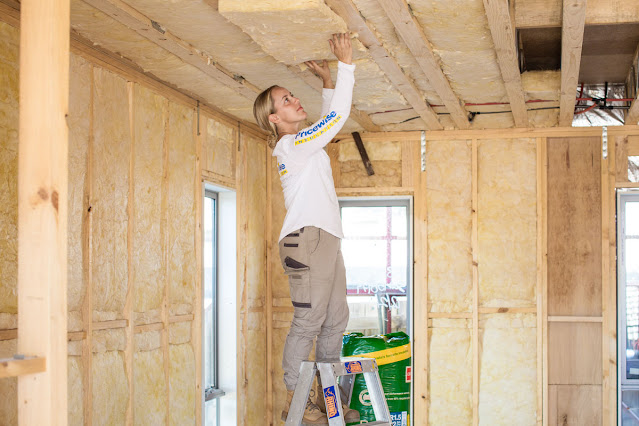What are energy-saving building materials?
Energy-saving building materials are materials used in the construction process to reduce the amount of energy consumed during the operation and use of the building. It is an important part of the sustainable building concept and aims to minimize the negative impact on the environment.
Here are some popular energy-saving building materials:
- Insulation: Insulation materials such as glass wool, polyurethane foam, EPS (Expanded Polystyrene) sponge, XPS foam (Extruded Polystyrene), and natural insulation such as foam concrete, fiber reinforced concrete, wood grain shell, can reduce the amount of heat transmitted through walls, ceilings, and floors, helping to keep indoor heat in winter and prevent heat in summer.
- Sound insulation: Soundproofing materials such as glass wool, mineral wool, and natural materials such as wood, help reduce outside noise and indoor sound that affects the comfort and health of residents.
- Insulated doors and windows: Using insulated doors and windows with Low-E glass (infrared reflective glass), double glass, and materials such as aluminum or uPVC with good insulation and water resistance, helps keep the heat in the house and reduce the amount of heat transferred through the glass.
- Green materials: Using green materials such as recycled wood, and recycled building materials such as recycled concrete or recycled bricks, helps to reduce the number of resources and energy consumed in the production process.
- Green roof: Using a green roof with materials such as grinding stone, and granite, with good heat reflectivity, helps to reduce energy consumption to cool the space inside the building.
These energy-efficient building materials increase energy efficiency and reduce operating costs while contributing to a reduction in greenhouse gas emissions and negative environmental impact.
Research on building materials such as heat insulation, sound insulation, and good heat retention to increase energy saving in buildings
Research on building materials to increase energy efficiency in buildings has been carried out to meet the demand for sustainable construction and reduce negative impacts on the environment. Here are some examples of building materials research and development related to heat insulation, sound insulation, and good heat retention:
Insulation
Research has focused on developing effective, lightweight, and durable insulation to reduce heat transfer through walls, ceilings, and floors. Research focuses on the mixing and use of materials such as glass wool, polyurethane foam, EPS foam (Expanded Polystyrene), and XPS foam (Extruded Polystyrene) to achieve optimal insulation performance.
Soundproofing materials
Research and improve sound insulation materials to reduce outside noise and indoor sound. Use materials such as glass wool, mineral wool, natural materials such as wood, and specially structured materials to effectively absorb and reduce noise.
Materials that retain heat well
Research is focused on developing materials with good heat retention to reduce energy consumption for cooling and heating systems. Using materials such as foam concrete, reinforced concrete, and wood grain shells can store and retain heat for a long time, helping to maintain a stable temperature in the building.
In addition, smart building technologies, such as the use of temperature sensors and automatic control systems, are also being studied to optimize energy use in buildings. These studies play an important role in the development of energy-efficient building materials and the construction of high-performance and sustainable buildings.
The example of how heat and sound insulation materials can be used to reduce energy consumption for cooling and heating.
Here are some examples of how heat and sound insulation materials can be used to reduce energy consumption for cooling and heating in buildings:
- Insulate walls and roofs: Use insulation materials such as glass wool, polyurethane foam, or mineral wool to insulate walls and roofs. These materials reduce the amount of heat transmitted through walls and roofs, keeping interior spaces cooler in summer and keeping indoor heat in winter, helping to reduce reliance on heating and cooling systems.
- Insulate doors and windows: Choose doors and windows with high insulation, use Low-E glass (infrared reflective glass), and door frames made from insulating materials such as aluminum or uPVC. These materials reduce the amount of heat transferred through the glass and door frames, helping to maintain a stable indoor temperature and reducing energy consumption for cooling and heating.
- Soundproofing materials: Use soundproofing materials such as glass wool, mineral wool, or specially structured materials to reduce outside noise and indoor sounds. The use of soundproofing materials for walls, ceilings, and floors helps insulate sound, creating a quieter indoor environment and reducing the impact on the comfort and health of occupants.
- Heat and sound insulation of ventilation ducts: Use heat and sound insulation materials for ventilation ductwork and hot water piping to reduce the amount of heat and noise transmitted through the system. This helps maintain a stable temperature in the space and reduces the need for energy for cooling and heating.
By using heat and sound insulation materials in the construction and renovation of buildings, we can reduce energy consumption for cooling and heating systems, and create a comfortable and comfortable living environment. cost savings for users.
Watch more: MEP Engineer
Watch more: professional engineer in Houston
Watch more: licensed engineer in Houston
Watch more: mep engineering firms in Houston
Watch more: design engineer in Houston
Watch more: HVAC engineering firms in Houston
Watch more: electrical engineering firms in Houston
Watch more: plumbing engineering firms in Houston
Watch more: mechanical engineering firms in Houston

